News
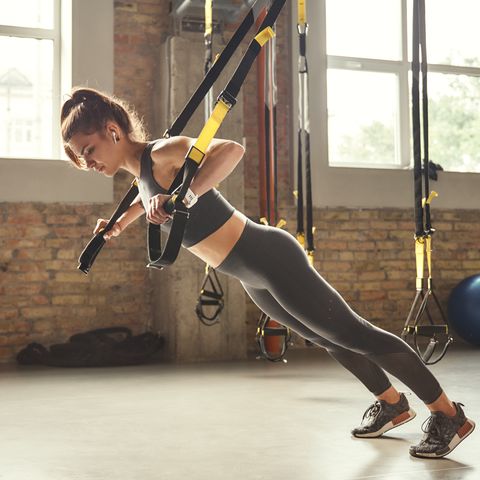
TRX
Try These TRX Workout Plans for a Well-Rounded Fitness Routine
TRX Training
Finding the time to squeeze all four types of exercise—endurance, strength, flexibility, and balance—into your week can feel like a Herculean task. The American Heart Association recommends at least 150 minutes per week of moderate exercise or 75 minutes per week of vigorous exercise, with a suggested goal of 30 minutes a day, five times a week. But that’s just endurance. You still need to budget time for the other three types, along with work, family, friends, and, occasionally, sleep. What you need is a workout plan that delivers maximum benefits in minimum time.
While there are only so many ways to cut down on endurance training while reaping the benefits, you can knock out an effective strength session in as little as 15 minutes. To help you through the process, celebrity fitness experts Jay Cardiello and Basheerah Ahmad have created 15-minute TRX workout plans for strength that you can do at home with your TRX Suspension Trainer. Each of the workouts targets a specific muscle group through two rounds of five moves performed for 60 seconds each with a 30 second break in between. (The total time, with breaks, comes to 15 minutes.)
For an upper body workout, Jay recommends a sequence of TRX exercises that include chest presses, low rows, squat rows, bicep curls, and tricep presses. His 15-minute TRX workout plan for core includes a series of TRX side planks, body saws, pikes, mountain climbers, and hip abductions.
For lower body work, Basheerah has you covered with five straightforward moves. Start with TRX hamstring curls, followed by hip presses, squats, mountain climbers, and lunges. (Yes, mountain climbers work both your core and your lower body!)
The next piece of your workout regimen is stability, but this one is easy to combine into your lower body workout. In stability work, you should focus on exercises that require you to stand on one foot. For example, you could try a TRX single leg squat to single leg balance reach progression, or a TRX crossing balance lunge to step side lunge combo. If you have time to stretch your 15-minute workout into a 20-minute workout, you can tack both of these onto the end of your leg workout. You can also try our ready-made TRX workout, which only takes 25 minutes of your time.
Now that you’ve got strength and balance out of the way, it’s time to think about flexibility. This one’s important because it improves your overall physical performance and helps you avoid injuries. While stretching after a workout will improve flexibility, it’s a reactive approach to training. You should also add a proactive approach, like yoga or the TRX Essentials: Flexibility video. In the video, TRX Director of Training and Development Fraser Quelch takes you through a 50-minute, real-time stretching routine designed to counteract the effects of daily life, and helps you understand what and why you’re stretching.
Even if you add all of these TRX workout plans to your fitness routine, that's still less than two additional hours per week to target the four types of exercise your body needs. Not sure which combination of workouts would work best for your schedule and goals? Our quick fitness assessment can help create a time-efficient plan tailored just for you. And really, if two hours a week can lead to a longer, healthier life, isn't it worth the investment?
Invest in yourself today with TRX Training gear.
TRX® YBELL NEO
BUY NOW
TRX® HOME2 SYSTEM
BUY NOW
TRX® BANDIT
BUY NOW
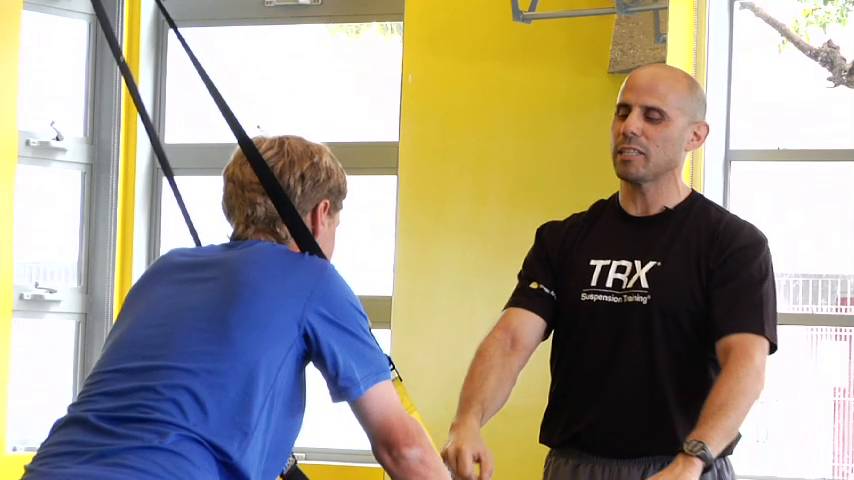
TRX
TRX Workout for Golfers
Golf requires a combination of strength, flexibility, timing, balance, power and endurance. Making sure your golf workout program addresses all of these components of fitness means you have to pick an efficient and effective way to train. Enter the TRX. I was first introduced to the TRX while still working as a strength and conditioning coach on the PGA and LPGA Tours. I immediately saw the potential to change the way we train golfers. Unloading movements to create the appropriate range of motion, balance and muscle sequencing leads to dramatic improvements in training results.
Swing components such as weight shifts, balance, staying on swing plane, shoulder turn, core stability and hip rotation all have physical requirements you can address using the TRX more effectively than any other training tool. Want to find the perfect TRX exercises for your specific golf goals? Take our quick assessment quiz to get a customized training plan that targets your unique needs on the course. The TRX Golf Workout DVD is produced in conjunction with Titleist Performance Institute and Dr. Greg Rose, both leaders in golf performance and fitness. Here, we have selected exercises from the DVD and put together a workout to improve your performance on the range and the course. We address all planes of motion, core stability, shoulder mobility, single leg and single arm exercises.
TAKE OUR TRAINING QUIZ
This workout is guaranteed to take your golf fitness to the next level!
Try one of our TRX products today:
TRX® PRO4 SYSTEM
BUY NOW
TRX® HOME2 SYSTEM
BUY NOW
TRX® TACTICAL GYM
BUY NOW
As the resident TRX Professor, Chris Frankel draws from over 25 years of experience as a strength and conditioning coach. He earned an MS in Exercise Physiology from the University of New Mexico, where he is currently completing his doctorate in Exercise Science. Before taking the position of Director of Programming at TRX, Chris was an instructor in the Department of Health, Exercise and Sport Sciences at the University of New Mexico.
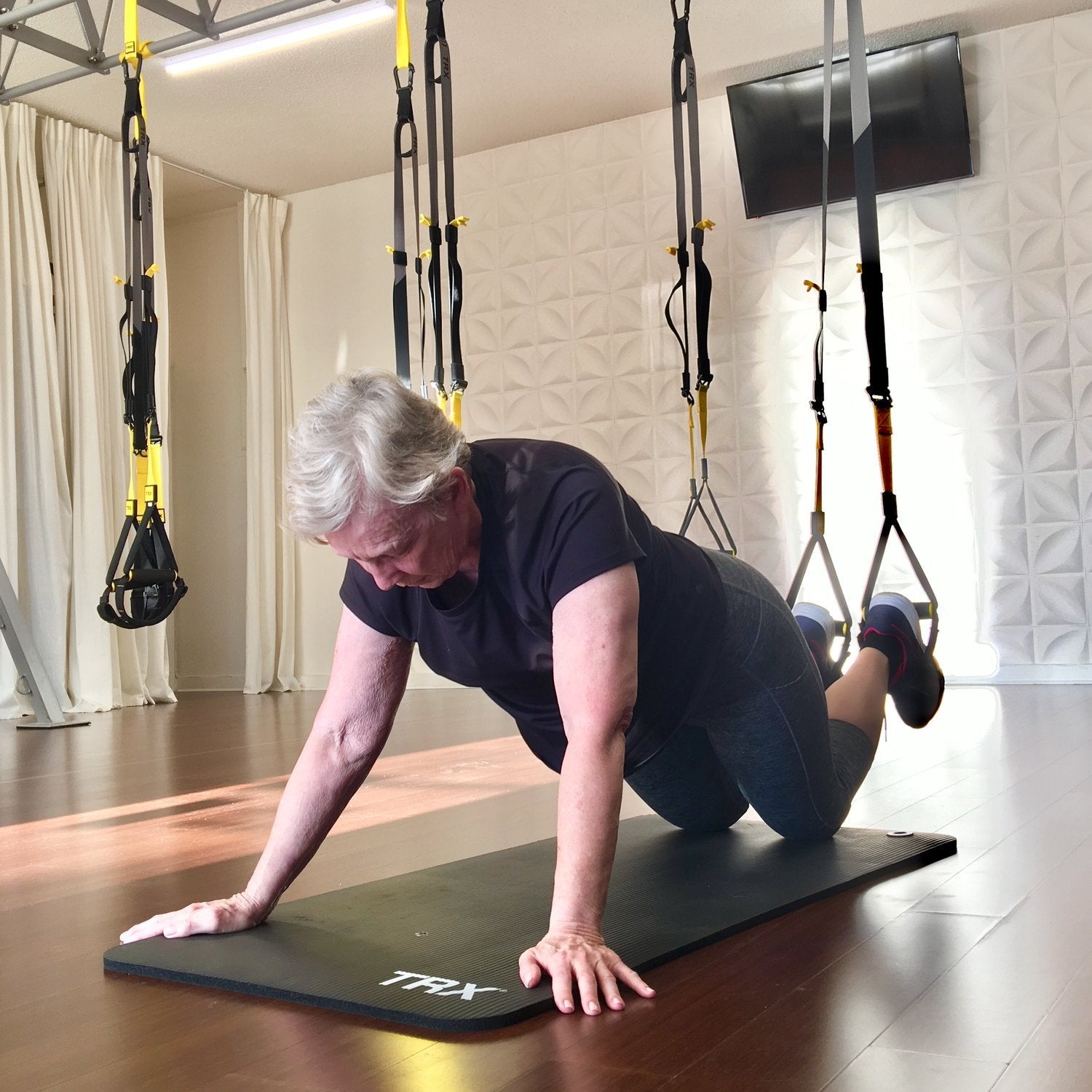
TRX
TRX Training for Seniors
Older adults represent the fastest emerging market in both fitness and rehabilitation. According to the National Institute on Aging, the older population will double between 2011 and 2030 when older adults will represent 25% of American society. The majority of these people will be dealing with at least one chronic health condition, which can be managed or reversed with physical activity. Exercise training is a highly effective way to decrease or manage the risk of chronic disease or disability, including fall prevention.
TRX Suspension Training can be a powerful tool to use with even the most limited older clients. A recent research study conducted by Dr. Christian Thompson at the University of San Francisco determined that the TRX Suspension Training system is a safe, effective and enjoyable exercise modality to utilize in older adults who were deemed to be at risk for an accidental fall. This research, which has been peer-reviewed by the American College of Sports Medicine, was an eight-week training program using TRX Suspension Training to enhance functional fitness in a group of older adults who had never used the TRX Suspension Trainer before. The TRX was used for mobility exercises for the ankle, hip, thoracic spine and shoulder; muscle strengthening exercises for the lower and upper body; and dynamic balance/gait enhancement exercises. Exercise volume and complexity progressed at regular intervals throughout the training period. Functional fitness outcomes were measured pre and post test by Functional Reach Test, Timed Up-and-Go Test, and 30 Second Chair Stand Test.
Some of the exercises used in the study include – and if you're wondering which of these might be most effective for your personal fitness journey, take our quick assessment quiz for customized recommendations. Here are the exercises:
TAKE OUR TRAINING QUIZ
TRX Overhead Squat
TRX Mid Row
TRX Chest Press
Examples of these exercises can be seen in this video, done for a previous blog post on osteoporosis.
Regardless of your age or ability level, the TRX is an adaptable and effective exercise device. Have you used the TRX to train older adult clients? If so, share your results below.
If you don't have a suspension trainer, pick one up today.
TRX® PRO4 SYSTEM
BUY NOW
TRX® HOME2 SYSTEM
BUY NOW
TRX® TACTICAL GYM
BUY NOW
All clients should consult with a physician or physical therapist regarding specific limitations and restrictions prior to beginning this or any exercise program.
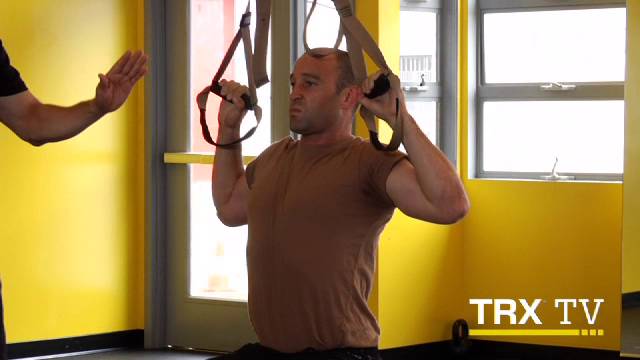
TRX
TRX Pull Up
TRX Training
Watch this video to learn how to perform a TRX Pull Up. And for a truly customized training plan that matches your current strength level, take our quick fitness assessment quiz - it'll help you build the perfect workout progression. Pair this with our other TRX exercises for a well-rounded workout.
TAKE OUR TRAINING QUIZ
Here's the gear you can use to do a TRX Pull Up today (plus more with the Ybell and Strength Bands):
TRX® PRO4 SYSTEM
BUY NOW
TRX® HOME2 SYSTEM
BUY NOW
TRX® TACTICAL GYM
BUY NOW
You can also combine the TRX pull-up with other TRX exercises for a more effective full-body workout. For inspiration, try one of our classes at TRX Training Club:
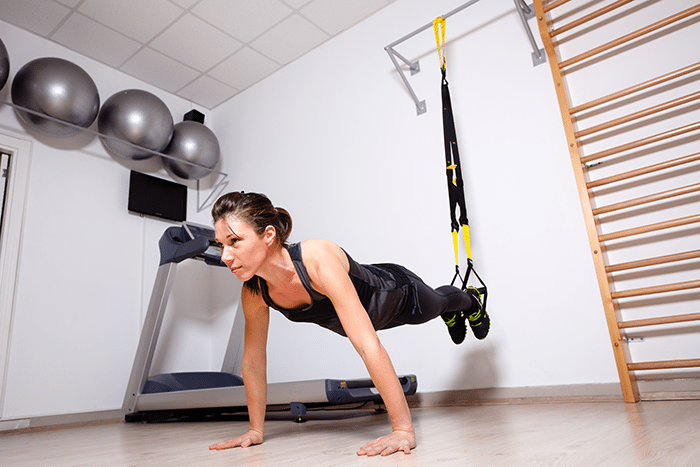
TRX
TRX Directory: Find a TRX Trainer or Facility Near You
TRX Training
Wondering how to find a TRX Trainer or group class near you? If so, click on over to the TRX Directory, plug in your city or ZIP code, and see what’s available. With hundreds of listings for trainers (and some for clubs too), it’s the ideal TRX Training connection whether you’re at home or on the road. Here’s a quick little video above that shows you how it works.
If you're just starting out with the TRX Suspension Trainer or Rip Trainer, it's a great way to get some personalized instruction on the exercises and principles. Not sure which TRX movements best match your current fitness level? Take our quick assessment quiz to receive customized exercise recommendations. And you can rest assured that every single trainer in the TRX Directory has been through one of our vigorous all-day professional education courses where they were indoctrinated into the world of TRX, learned the proper cueing for over 70 TRX exercises, and learned how to adapt the exercises to any fitness level.
TAKE OUR TRAINING QUIZ
Click here to check out the TRX Directory.
Note: If you are looking for a club in your area offering TRX Training and don't find one, please keep coming back as we are adding listings to our database all the time. You can also join our community online at the TRX Training Club:
If you haven't bought a TRX suspension trainer yet, take a look at the gear below to get started:
TRX® PRO4 SYSTEM
BUY NOW
TRX® HOME2 SYSTEM
BUY NOW
TRX® TACTICAL GYM
BUY NOW
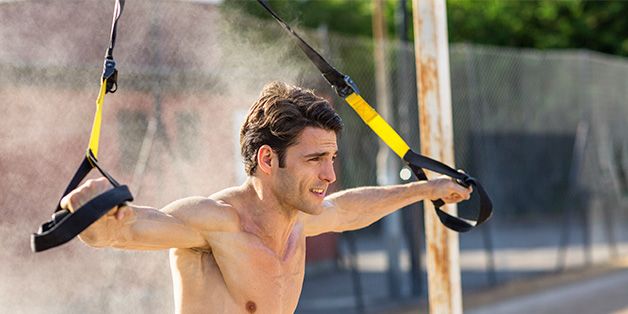
TRX
TRX Chest, Back, and Leg Workouts
Here are three excellent TRX workouts for the chest, back, and legs, to build stability, strength, and mobility from Kasten Jensen of yestostrength.com. Not sure which TRX exercises are right for your fitness level? Take our quick assessment quiz to get a personalized training plan tailored to your goals. An accomplished athlete and fitness industry veteran, Jensen knows what it takes to achieve optimum results and often integrates combination exercises into the programs of his clients and athletes as a way to engage a larger portion of muscle fiber and increase muscle mass. Here, Karsten shows us three innovative combination exercises on the TRX Suspension Trainer.
TAKE OUR TRAINING QUIZ
Combo #1:
TRX Mid Row (w/Band, Shoulders Abducted)
TRX Mid Row (Shoulders Abducted)
TRX Mid Row (Adduction to Abduction)
This cool combo emphasizes a pull pattern with horizontal abduction to emphasize the posterior deltoids, rhomboids and middle trapezius. It's great for athletes seeking to improve posture or prevent shoulder injuries (volleyball, racquet athletes, baseball pitchers). The first exercise in the sequence uses bodyweight plus band resistance. The second exercise uses bodyweight only as the resistance, and the third exercise makes use of the fact the athlete is stronger when pulling with the shoulder joint in adduction compared to abduction. Thus, the concentric portion of the row is performed with arms adducted. Subsequently, in the contracted position, the upper arms are shifted into the abducted position and the posterior deltoids are challenged eccentrically.
Combo #2:
TRX Chest Fly
TRX Chest Fly (Eccentric Emphasis)
TRX Chest Press
This cool combo emphasizes the pectoralis major, anterior deltoids and biceps brachii in horizontal adduction. It also places a great challenge on the core muscles in an anti-extension function. The first exercise in the sequence is a regular chest fly. The second exercise emphasizes the eccentric portion of the fly. In the bottom position, the elbows are brought in and the athlete presses him/herself up in a chest press fashion. The third exercise recruits the target muscles in a less challenging movement, the regular chest press (the shoulder joint can be in the adducted or abducted position).
Combo #3:
TRX Hip Airplane
TRX Lunge
TRX Single Leg Squat
In this cool combo, the unique benefits of placing the back foot in the cradle includes natural perturbations through the foot and also your center of gravity is moved back compared to a single leg squat. If the athlete moves to a point where the foot cradle is creating a slight backward pull, there is also an interesting increased activation of the tibialis anterior, a muscle that is often under worked in many training programs.
The first exercise emphasizes the gluteus maximus as extensor, abductor and external rotator of the hip joint. The second exercise is a regular lunge, and the third exercise is a regular single leg squat, where the foot is no longer in the foot cradle, thus the center of gravity is moved forward and there is an increased emphasis on the quadriceps muscles.
When the movements are optimally sequenced, combination exercises allow for a unique blend of medium to high intensity and high volume. Another fan of combination exercises? TRX Director of Training and Development Fraser Quelch, who's shared some very cool combos with us in the past.
Try one of our TRX products today:
TRX® PRO4 SYSTEM
BUY NOW
TRX® HOME2 SYSTEM
BUY NOW
TRX® TACTICAL GYM
BUY NOW
References:
McGill S. Groove Motion/motor patterns and corrective exercise. Ultimate Back Fitness and Performance Chap 10, p 207. Backfitpro Inc. 2009
Karsten Jensen has been a strength and conditioning coach for 15 years (www.yestostrength.com). He has a Master’s degree in Exercise Physiology and is a Chek Practitioner Level 2 and a Chek Holistic Lifestyle Coach Level 3. Karsten worked for the Danish National Elite Sports Institution from 2000 to 2007, rendering his service to nationally and internationally ranked athletes from various sports. He is currently based in Mississauga, Ontario.
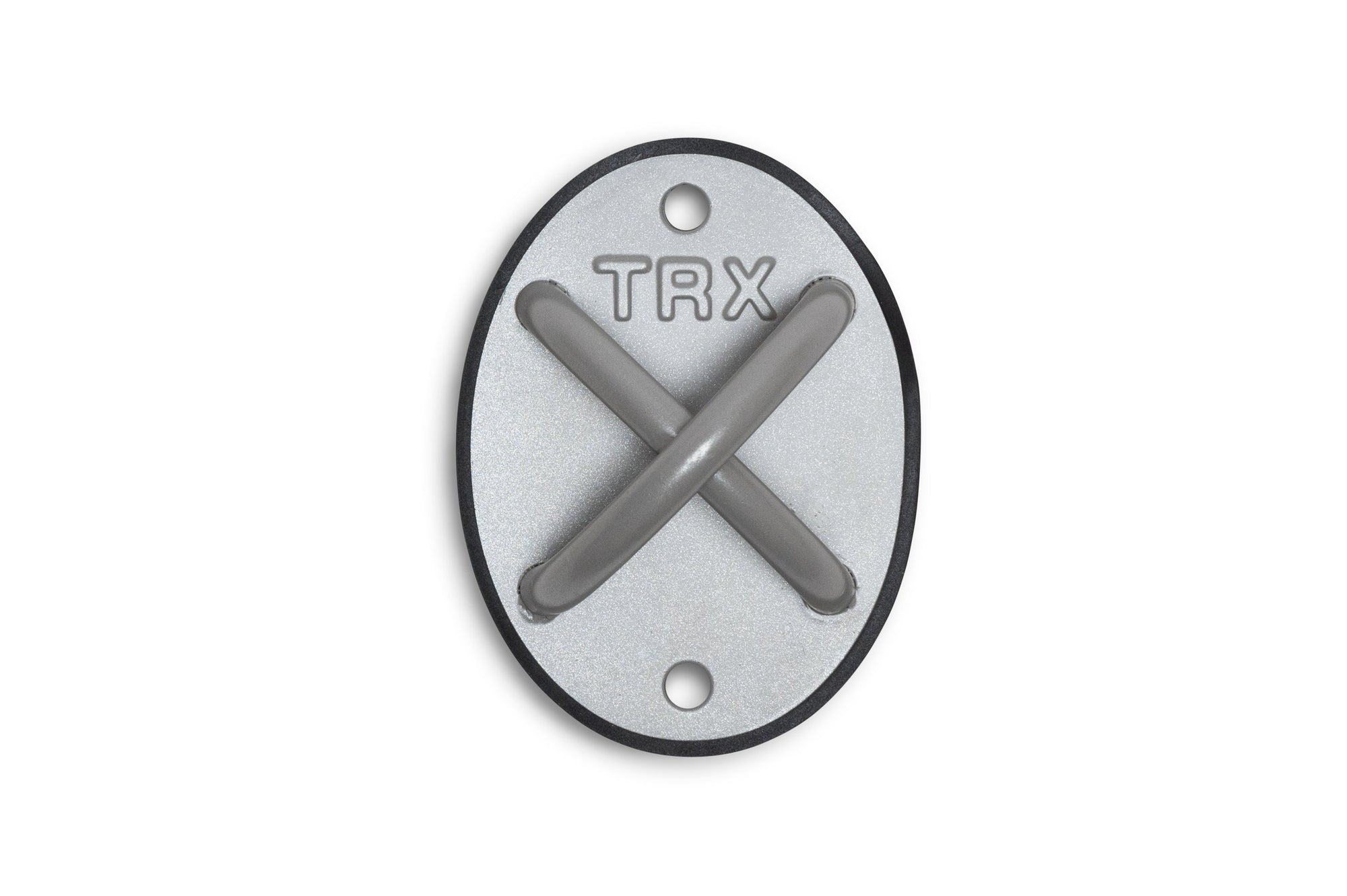
TRX
TRX® Anchors: 6 Ways to Set Up Your Suspension Trainer™
From permanent to semi-permanent to portable, there's a TRX anchor for everyone.
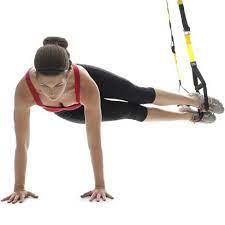
TRX
TRX Ab Challenge Workout
In this workout, TRX Master Trainer Jonathan Ross takes a three-dimensional, multiplanar approach to core training. Ross combines a blend of traditional and original TRX exercises that manipulate stability and movement to challenge your core. These exercises require you to remain braced and in control while manipulating your stability. While there may be a significant amount of movement in your extremities, engage your core to maintain control. The Challenge:
Perform these six exercises in succession, taking a 20-second rest between each movement. (Want to find the perfect exercise sequence and rest periods for your fitness level? Our quick assessment quiz can create a personalized workout timing strategy just for you!) This carefully structured format helps maintain an effective balance between intensity and recovery.
TAKE OUR TRAINING QUIZ
TRX Side Plank with Rotation (10 reps per side)
TRX Pendulum Mt. Climber (45 seconds)
TRX Elevated Pull Through (45 seconds)
TRX Side Plank with Knee Tuck (20 reps per side)
TRX Pendulum Pike (10 reps per side)
TRX Assisted Roll-up (15 reps)
If you want more, rest for two minutes and give it another go.
You can also incorporate other movements into this. Find some for yourself in our TRX exercises YouTube video:
Use our TRX gear below to help you.
TRX® PRO4 SYSTEM
BUY NOW
TRX® RIP TRAINER
BUY NOW
TRX® SRENGTH BANDS
BUY NOW
You can also find other TRX ab exercises like the ones above on our TRX Training Club dashboard. Try it for free today:
Jonathan Ross (www.AionFitness.com) is a TRX Master Trainer and the 2010 IDEA Personal Trainer of the Year. His “800 pounds of parents” directly inspired his prolific fitness career. He lost his father to obesity at over 400 pounds, then helped his mother lose 170 pounds. He is host of the Discovery Health series, “Everyday Fitness” and the author of Abs Revealed, which offers a modern, intelligent approach to abdominal training.
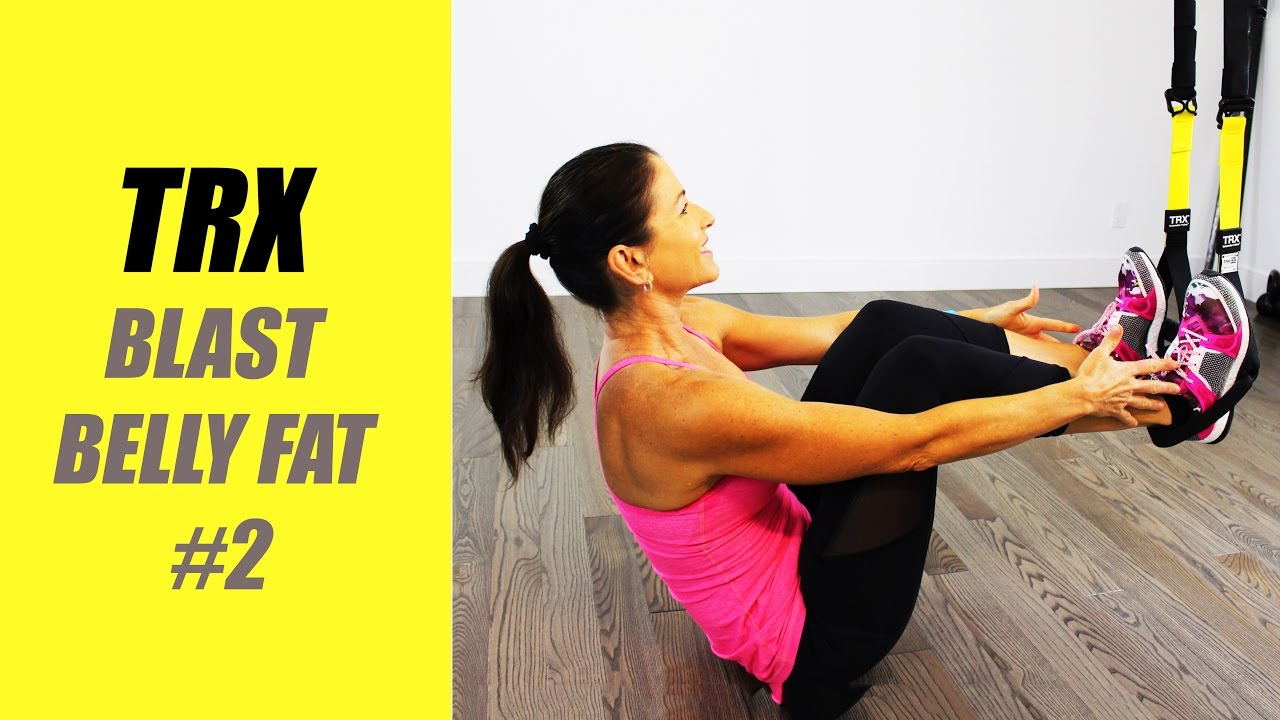
TRX
How To Lose Belly Fat With TRX
If you are looking for a quick trick to shed some excess belly fat, TRX could be a good place to start. Unlike almost any other training system available, TRX Suspension Training challenges your entire body in all planes of motion creating a huge metabolic effect and helps you build lean, toned muscle.
First off, you should know that you are not alone in your quest to trim down. Every month there are 110,000 Google searches for "how to lose body fat," on average 51% of American adults report that they want to lose weight. Not sure where to begin? Take our quick fitness assessment quiz to get a personalized workout plan that factors in your current fitness level and weight loss goals. Though challenging, you can make a lot of headway toward trimming down your waistline with these simple tips and a structured approach tailored to your needs.
TAKE OUR TRAINING QUIZ
1) Stop eating foods labeled “Low Fat” or “Low Calorie”Though it sounds like a good idea, the oh-so-popular “low-fat diet” has had some big negative consequences for the American metabolism. When fat and calories became the enemy, the food industry rushed to provide more low-fat and low-calorie options. The problem was that when they removed the fat, the food tasted terrible, so the industry loaded these new “healthy” options with loads of sugar, salt and artificial sweetener to compensate.The result was that we started ingesting copious amounts of sugar in place of fat. And while sugar, by volume, has fewer calories than fat, your body process sugar and fat in dramatically different ways. When you have excess sugar in your system your body turns it into fat - and typically this is the kind of fat that accumulates in the belly, hips and butt.Instead, try eating less-processed, whole foods without added sugars, salts and chemicals. Your body will process these calories in a totally different and more efficient way, and you will find yourself more satiated, with more consistent energy levels.
The TakeawayThe fewer things done to your food between its source and your mouth, the better - most of your food should be close to its natural state, colorful and unprocessed.2) Stop focusing on “problem areas”Sorry, there are no amount of crunches you can do to lose your belly fat. In fact, crunches are probably one of the least effective exercises you can do to slim your waistline. If you want to make a big impact on your “problem areas,” think about the bigger picture. Focus on total-body exercises and workouts that challenge your entire body. This will burn more calories and improve your functional fitness - the fitness that you use in everyday activities.This kind of holistic approach to your workouts will make you feel better and move better no matter what you’re doing, making it easier to live a more active lifestyle, and in time helping you improve your problem spots. The TRX Suspension Trainer delivers an incredible total-body challenge with every exercise, providing a huge metabolic effect that will help you move and feel better than ever.
The TakeawayUsing more muscles means burning more calories. Incorporate total-body exercises in your workouts to get the biggest bang for your training buck.3) Progress over perfectionWe’ve all been there; you missed your small window to make it to the gym or your favorite group class is too full, so you decide to take a day off. The next day your boss schedules a meeting over your lunch hour so you miss the run you had planned for that day. This pattern adds up, then the weekend comes and you try to make up for a week off with a marathon session at the gym, totally exhausting yourself and killing your workout motivation for days.Remember this: One meal or one food does not make you fat or out of shape - just like one workout does not lean you out out or make you a champion. Over time, all the small things you do consistently make a big difference. Making the healthy choice for meals and pushing away from the table before you’ve overdone it, are simple things you can do every time you eat. The same thing goes for your exercises plan, small doses performed consistently can significantly contribute to your strength, mobility and fat loss goals.
So if you only have 15 minutes, do a 15 minute workout, even though you had more scheduled for that day. There is a lot you can do with just your bodyweight and a little space to move you toward your goal. A really effective tool to have for these situations is a TRX Suspension Trainer, they set up in a matter of seconds to any sturdy door, overhead bar, fence or vertical pole, allowing you to get exactly the kind of workout you need in the time and space you have. If you don’t know what kind of workout you want to do, try the free TRX App with four free total-body workouts you can do anywhere.
The TakeawaySmall doses performed consistently can significantly contribute to your strength, mobility and fat loss goals. Don’t stress the small stuff, and keep your eyes on the prize. For more information, take a look at our weight loss calculator
Don't have any TRX Training gear yet? Here are some options to get you started:
TRX® PRO4 SYSTEM
BUY NOW
TRX® RIP TRAINER
BUY NOW
TRX® BANDIT
BUY NOW
